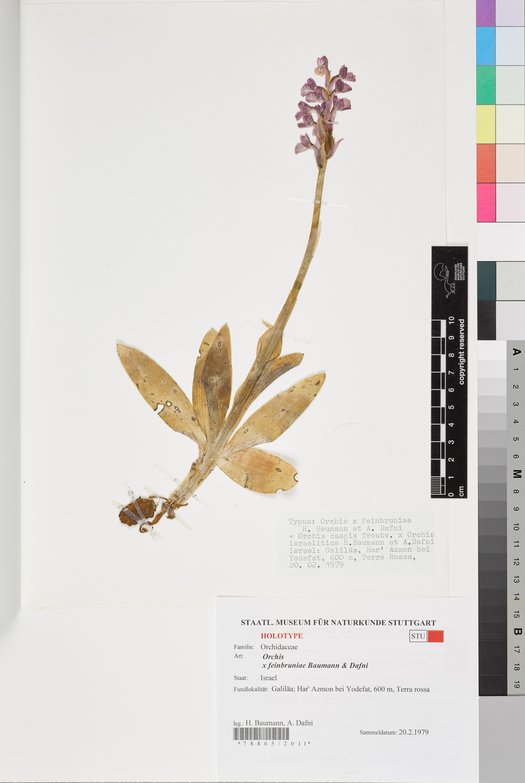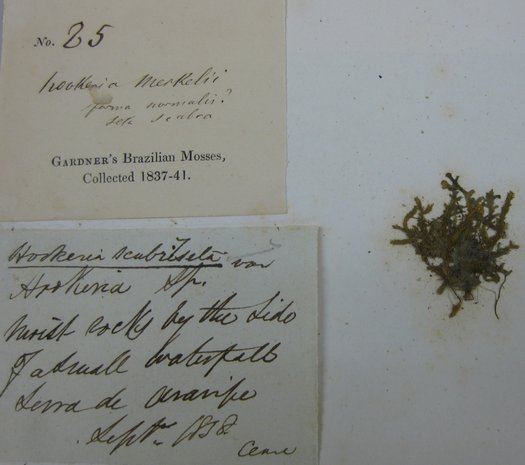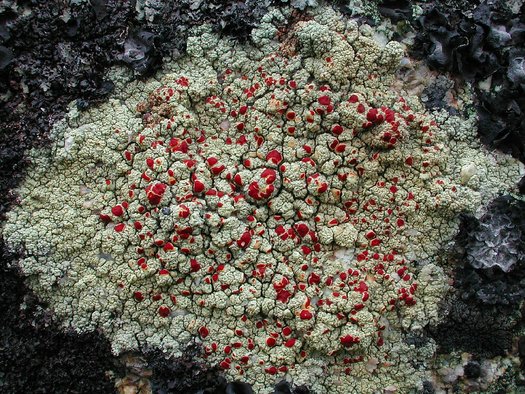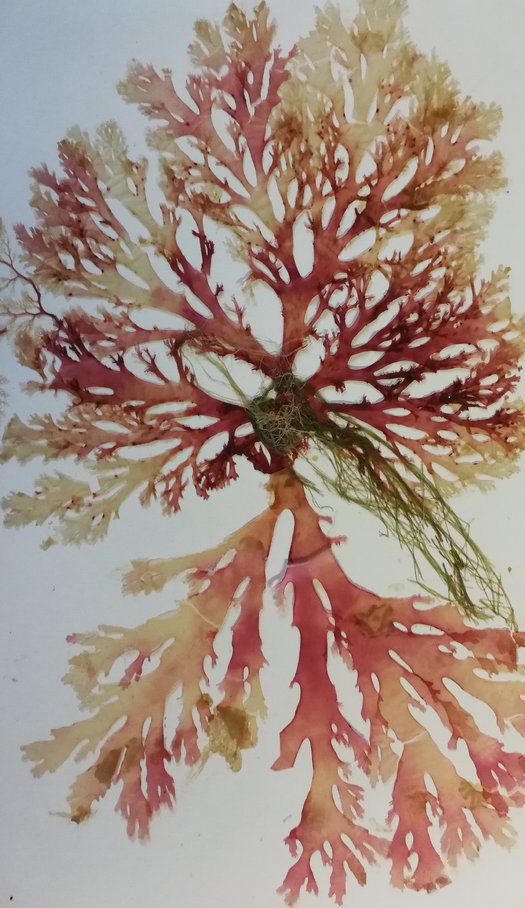Contacts: PD Dr. Mike Thiv
The herbarium Stuttgart is the largest collection of ferns and flowering plants in the state of Baden-Württemberg. The focus of the collection is on Baden-Württemberg and neighbouring areas of Central Europe. The following important collections from this region are included:
Uwe Amarell, Erwin von Arand-Ackerfeld, Karl Bertsch, Ernst Bolter, Georg Wolfgang Brielmaier, Friedrich Hegelmaier, Wilhelm Kreh, Christian Maier, Adolf Mayer, Karl Müller, Julius Plankenhorn, Walter Plieninger, Evarist Rebholz, Heinrich Sautermeister, Karl Schlenker, Ernst Schüz, Oskar Sebald, Siegmund Seybold, Arno Wörz and the „Landesherbar“ („Herbariums für vaterländische Naturkunde“ und „Herbarium der Centralstelle des landwirtschaftlichen Vereins“)
The Stuttgart herbarium also holds important collections from the rest of Europe, in particular from France (Jean Prudhomme), Greece (August von Hayek, Theodor von Heldreich), Norway (Johann Gottlob von Kurr), Portugal (Ulrich Deil) and Spain (Ulrich Deil, Friedrich Hegelmaier, Max Nydegger, Pietro Porta, Jean Prudhomme, Gregorio Rigo).
The Stuttgart herbarium also focusses on Ethiopia (Oskar Sebald, Wilhelm Schimper), Morocco (Ulrich Deil), South Africa (Christian Friedrich Ecklon, Friedrich von Krauss, Carl Baron von Ludwig, Hans Joachim Schlieben, Rudolf Georg Strey et al.), India (Joseph Dalton Hooker, Johann Friedrich Metz, Thomas Thomson), Iran (Johannes Bornmüller, Theodor Kotschy, Jürgen Schedler), Australia (Ferdinand von Müller, Arno Wörz) and New Zealand (Thomas Kirk).
An index of the most important collectors us given in Engelhardt & Seybold (2009): „Die Sammler von Farn- und Blütenpflanzen der Herbariums des Staatlichen Museums für Naturkunde in Stuttgart (STU)“.
Valuable collections have also been added in more recent times. In the last years, large collections have been acquired, for example from Jean Prudhomme (50,000 specimen), Hippolyte François Jaubert (10,300), Friedrich Schupp (10,000 specimen), Günter Gottschlich (Tauschverein Liege and Allgemeines Herbar; 11,000 specimen, excl. Hieracium), Volker Hellmann (13,500 specimen), Gerda and Prof. Wilhelm Sauer (50,000 specimen) and duplicates from Max Nydegger (6,000 via Günter Gottschlich). The fern collection was greatly expanded by specimens from Marcus Lehnert from Ecuador and Papua New Guinea (reference collections from research projects, approx. 1,000 specimen) and Günther Zenner (50,000 specimen) from Central Europe. In addition, the entire herbarium (17,000 specimen) of the University of Freiburg was taken over in 2024. Numerous current specimen from the floristic mapping and voucher material of other scientific activities (GBOL) have been deposited in STU. They are thus available for future work. In addition to the herbarium specimen collection, there is also an extensive fruit and seed collection as well as a wood collection.
This collection is ordered alphabetically and substructured geographically. Since 2000 all newly acquired specimens are databased.
Literatur:
Barge, A. (2011): Das Herbarium von Oberlehrer Evarist Rebholz aus Tuttlingen. – Jahreshefte der Gesellschaft für Naturkunde in Württemberg 167: 227-246. Stuttgart.
Engelhardt, M. und S. Seybold (2009): Die Sammler von Farn- und Blütenpflanzen des Herbariums des Staatlichen Museums für Naturkunde in Stuttgart (STU). - Jahreshefte der Gesellschaft für Naturkunde in Württemberg 165/2, S. 5-162. Stuttgart. (pdf download)
Gottschlich, G. (2015): Bestand und Genese des Herbariums Hegelmaier (STU). Dargestellt am Beispiel der Gattung Hieracium (Asteraceae) mit besonderer Berücksichtigung der Typus-Belege. - Jahreshefte der Gesellschaft für Naturkunde in Württemberg 171: 21-50. Stuttgart.
Pleines, T. und M. Engelhardt (2006): Das Herbarium von Karl Schlenker. - Jahreshefte der Gesellschaft für Naturkunde in Württemberg 162, S. 129-135. Stuttgart
Sebald, O. (1983): Alexander Wilhelm Martini (1702-1781), ein Begleiter J. G. Gmelins auf der Sibirien-Reise, und sein Herbarium. - Stuttgarter Beiträge zur Naturkunde Serie A (Biologie) 368. 24 S. Stuttgart. (pdf download)
Wörz, A., Oettler, G. & M. Engelhardt (2009): Georges Cuviers "Reise auf die Württembergische Alb" – ein zeit- und wissenschaftliches Dokument. – Jahreshefte der Gesellschaft für Naturkunde in Württemberg 165/1: 301-336. Stuttgart
Wörz, A. (2007): The "Botanische Reiseverein" - A 19th century joint-stock company for the collecting of herbarium specimens. - Huntia 13(2): 121-141.
Wörz, A- (2016). Der Esslinger botanische Reiseverein 1825-1845. Eine Aktiengesellschaft zur Durchführung naturkundlicher Sammelreisen – Stuttgarter Beiträge zur Wissenschafts- und Technikgeschichte 9: 1-211. Berlin.




